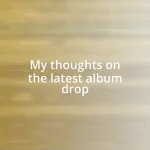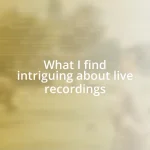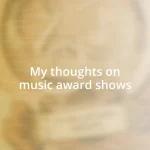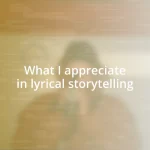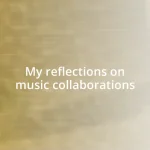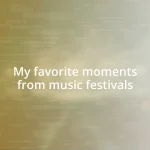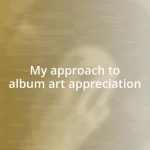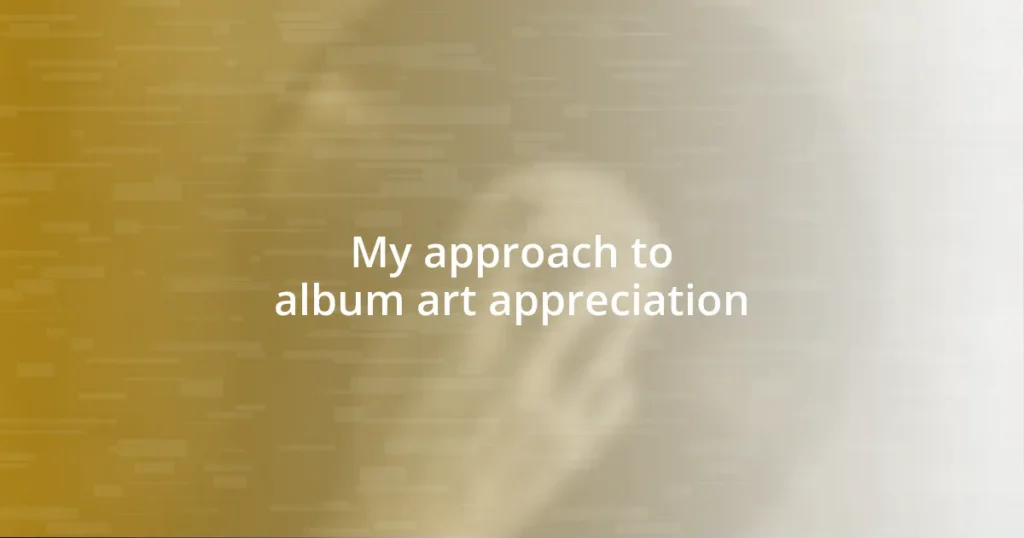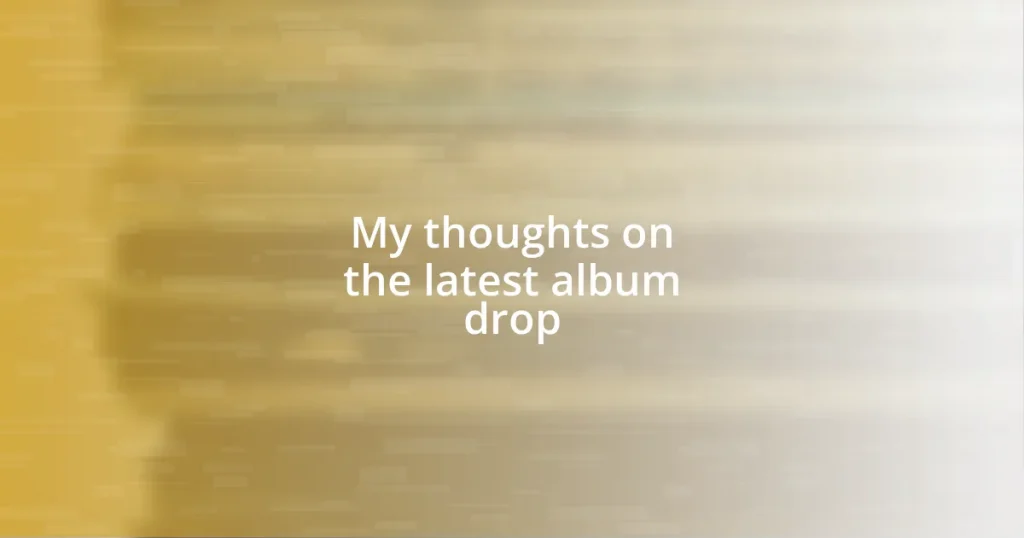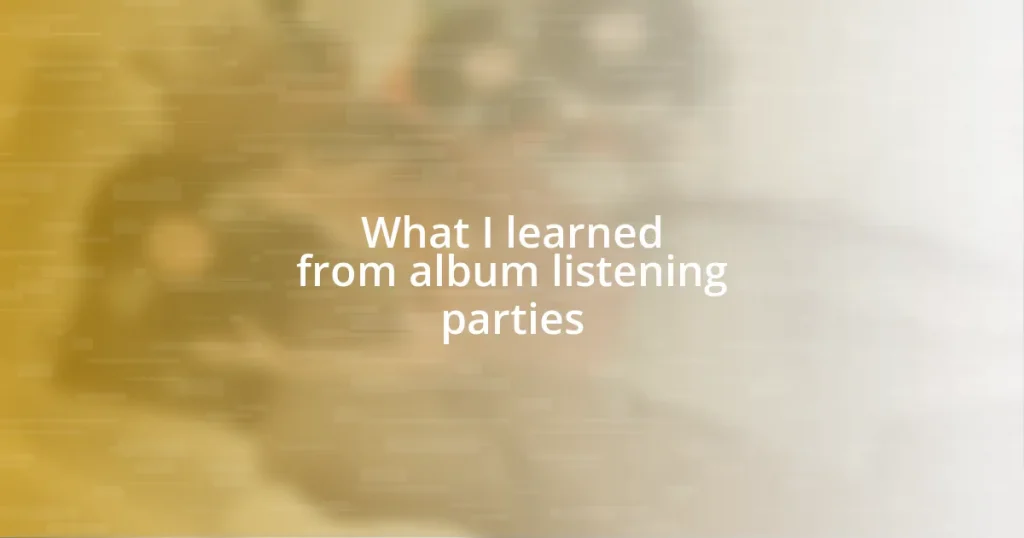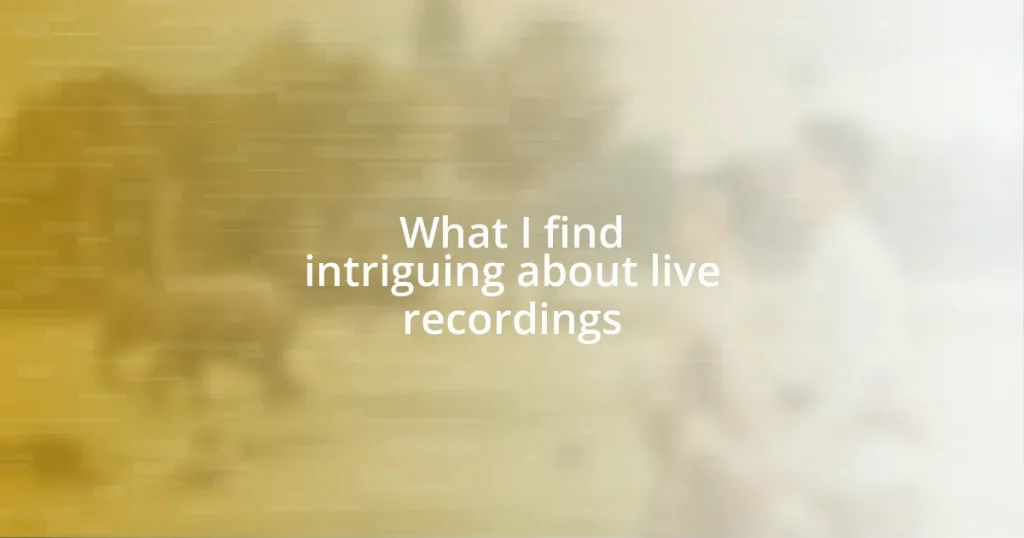Key takeaways:
- Album art serves as a visual narrative that complements music, evoking emotions and memories long before listening.
- Key elements of effective album art include color palette, imagery, typography, consistency, and emotional impact, each influencing the listener’s experience.
- Typography significantly shapes first impressions and emotional connections, impacting how the music is perceived.
- Iconic album covers can symbolize cultural movements and evoke nostalgia, forging a deep connection between individuals and their experiences.
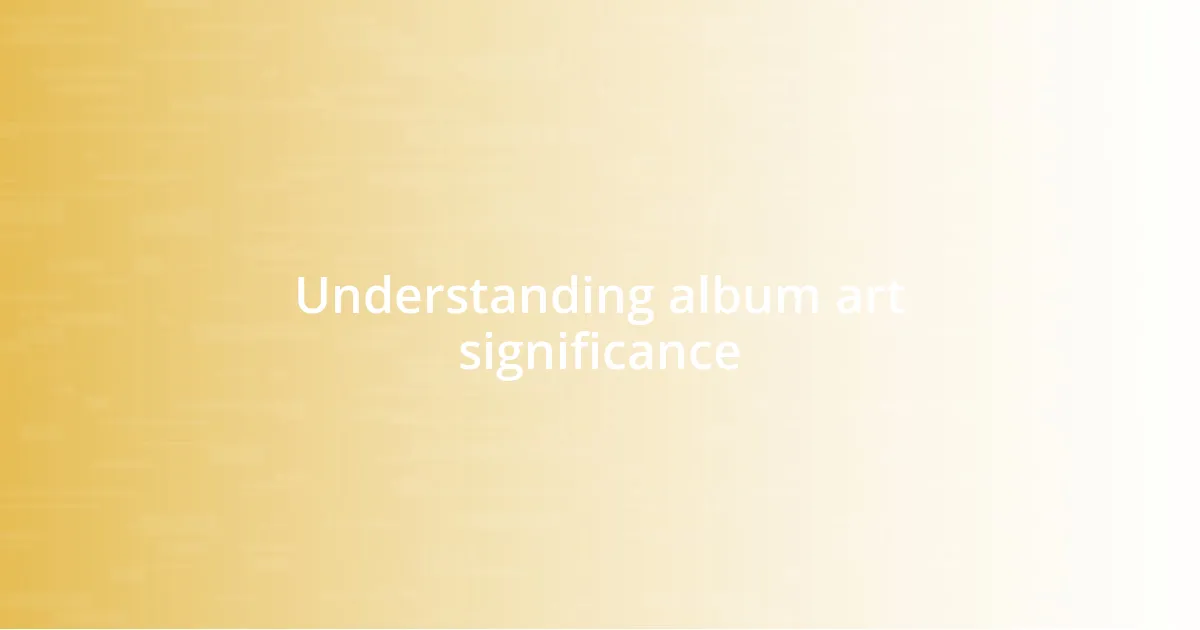
Understanding album art significance
Album art is more than just a cover; it’s a visual narrative that complements the music within. I remember holding a vinyl of Pink Floyd’s “The Dark Side of the Moon” as a teenager. The iconic prism image made me feel the complexities of the themes the album explored long before I even heard a note. Isn’t it fascinating how a single image can evoke such strong emotions and set the stage for a musical journey?
When I think about album art, I often wonder about the thought process behind each design. For example, the bold colors and surreal elements of David Bowie’s “Aladdin Sane” reflect his unique identity and the experimental nature of the 70s music scene. This connection between art and context really enhances our understanding of the album itself. Doesn’t it make you appreciate the music even more when you see how the visuals intertwine with the audio?
Moreover, album art can ignite nostalgia, sparking memories tied to the music. I’ve often found myself flipping through my collection, stopping at the colorful cover of The Beatles’ “Sgt. Pepper’s Lonely Hearts Club Band,” which instantly brings back memories of listening to it on road trips with friends. It’s incredible that a piece of art can encapsulate entire experiences and emotions, serving as a time capsule that transports us back. What is it about certain covers that stick with us long after we’ve moved on to other albums?
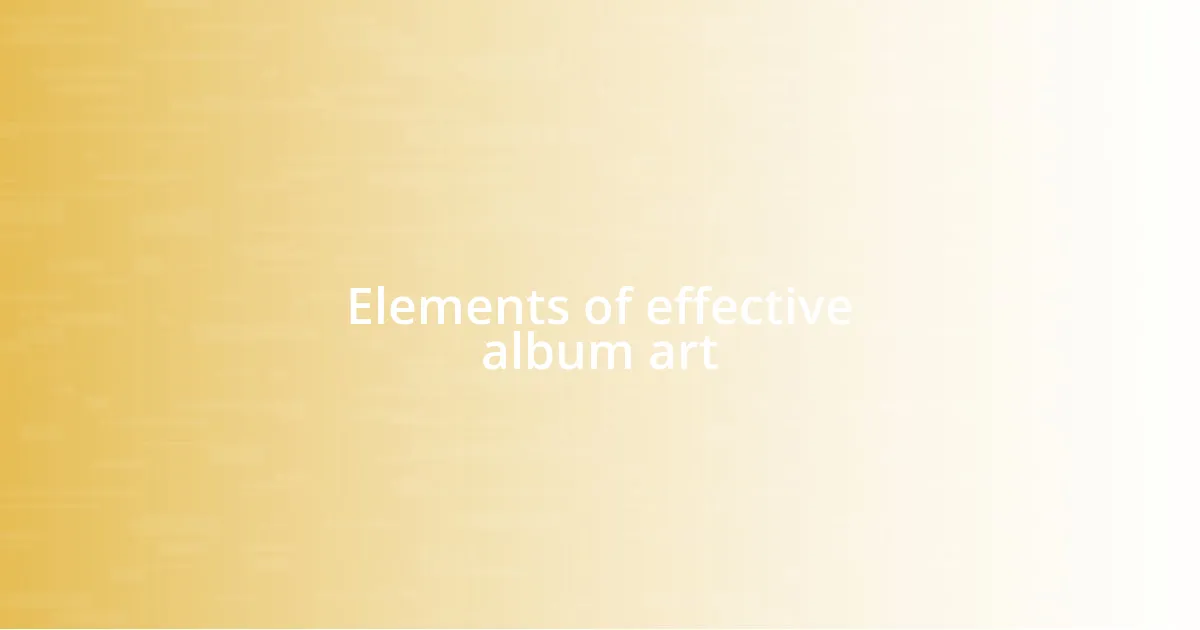
Elements of effective album art
When analyzing album art, several key elements come into play, shaping its effectiveness and resonance with the audience. I’ve personally found that the use of color, imagery, and typography can evoke different emotions, making the album feel more relatable. The delicate balance between these components can transform a simple cover into a visual masterpiece that captures the essence of the music.
Here are some elements that contribute to effective album art:
- Color Palette: Colors can enhance or completely alter the mood the music conveys.
- Imagery: Unique and compelling visuals can tell a story, often reflecting the themes within the music.
- Typography: Fonts and lettering style speak volumes about the genre and tone of the album.
- Consistency: A cohesive design style that matches the artist’s persona makes the art memorable.
- Emotional Impact: Great album art connects with the audience on a personal level, tapping into emotions like nostalgia or excitement.
Reflecting on my own experiences, I recall the moment I first saw the cover of Fleetwood Mac’s “Rumours.” The ethereal, almost dreamlike quality of the artwork instantly drew me in. I could sense the album’s intimate themes of love and heartbreak, long before I even listened to it. It’s this enchanting ability of album art to evoke anticipation and curiosity that makes it such a vital aspect of the music experience.
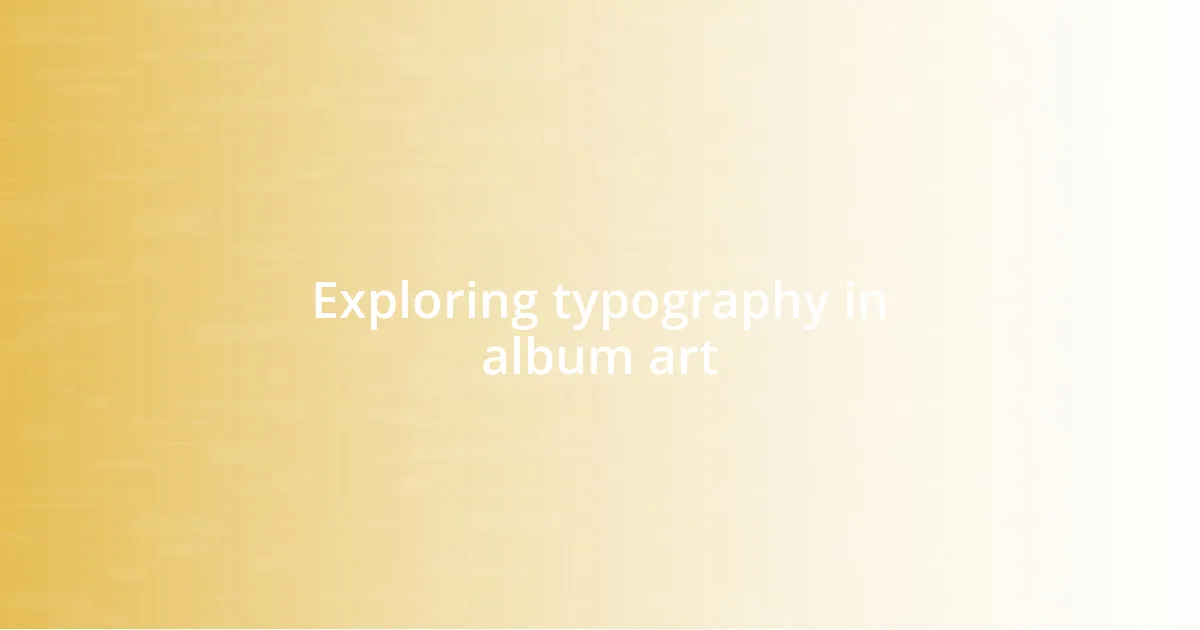
Exploring typography in album art
Typography in album art plays a pivotal role in shaping the listener’s first impression. I remember stumbling upon the cover of Nirvana’s “Nevermind” and being instantly struck by the bold, stark lettering. It encapsulated the raw energy of grunge music, perfectly complementing the chaotic vibe of the album. The choice of font doesn’t just convey titles; it evokes emotions and communicates the essence of the artist’s style.
When I look at album covers that feature intricate typography, I find myself delving deeper into their meaning. For instance, the curvy script of Adele’s “21” conveys a sense of intimacy and warmth, drawing listeners closer. It makes me think about how fonts can influence our perception of music, inviting us into a personal space where the lyrics resonate on a profound level. Have you ever felt a connection to a song just because of how the text looks on the cover?
Additionally, the contrast between the typography and imagery can also enhance the overall impact of the album art. I vividly recall the contrasting blocky letters against the dreamy, surreal graphics of Tame Impala’s “Lonerism.” It creates a striking balance that piques interest and invites deeper exploration. In my experience, this visual play can often lead to a more fulfilling listening experience, as it sets expectations that the music will challenge and inspire us.
| Aspect | Description |
|---|---|
| Font Choice | Sets the tone and reflects the genre. |
| Size Variation | Creates emphasis and visual hierarchy. |
| Color Usage | Establishes mood and emotional connection. |
| Integration with Imagery | Enhances storytelling and overall aesthetic. |
| Readability | Ensures that the title is easily discernible, even from afar. |
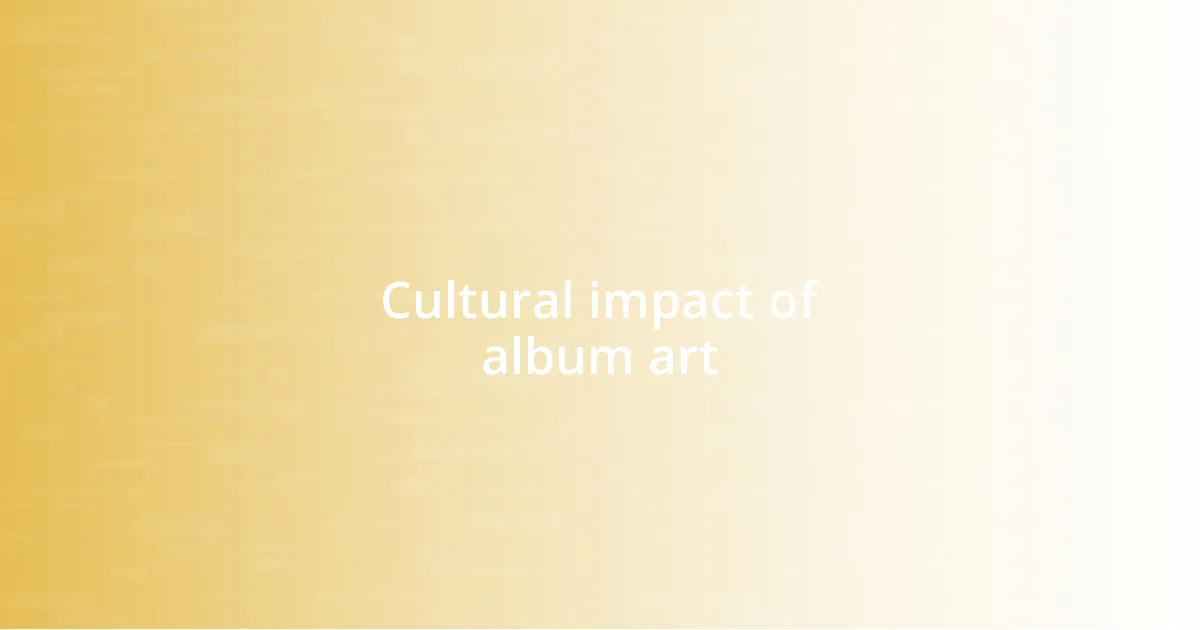
Cultural impact of album art
When I think about the cultural impact of album art, I can’t help but recall how the iconic cover of The Beatles’ “Sgt. Pepper’s Lonely Hearts Club Band” became a symbol of the 1960s counterculture. It wasn’t just a visual treat; it represented an entire movement of rebellion and creativity. This vibrant collage not only influenced the music it contained but also left an indelible mark on fashion, art, and society, showing how album art can transcend its medium.
Moreover, I often wonder how album covers shape our collective memories. For instance, the haunting imagery of Pink Floyd’s “The Dark Side of the Moon” resonates with so many because it speaks to universal themes of human experience. The prism exploding with color invites reflections on life, making it a conversation starter for fans of all ages. I remember discussing its symbolism with friends, reinforcing the belief that music and its presentation are intertwined, creating a shared cultural dialogue.
Reflecting on my own journey, I’ve noticed that certain album covers prompt nostalgia. The cover of Alanis Morissette’s “Jagged Little Pill”—with its raw, unfiltered image—captures the spirit of a generation grappling with identity and emotions. It brings back memories of my teenage years, a time of struggle and self-exploration. Isn’t it fascinating how images on a cover can evoke specific memories and feelings, connecting us back to pivotal moments in our lives? This power of album art, in my experience, is what truly solidifies its place in our culture.
